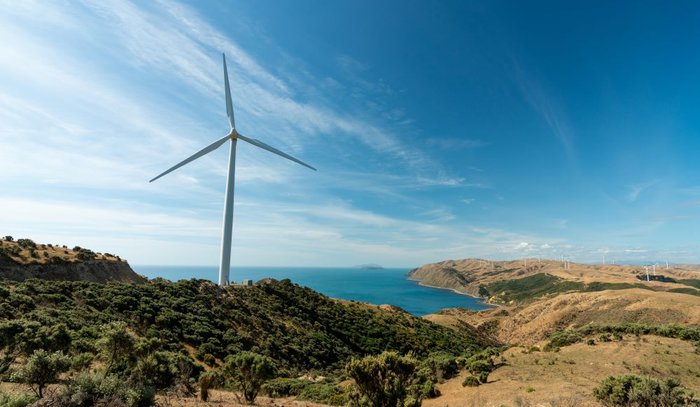Eye on electricity
How firming renewables will impact the electricity sector
- Generation
- Retail

Aotearoa New Zealand’s electricity system is transforming. More renewable electricity generation, like wind and solar farms, are being built to meet increasing electricity demand and the Government’s renewable energy targets. These electricity sources are, however, intermittent, as sunlight and wind fluctuates. This article looks at generators’1 ability to ‘firm’ this intermittent renewable generation. That is, how electricity generators can ensure electricity demand is met when there are cloudy or calm conditions.
There are multiple ways to firm intermittent renewable electricity generation
The electricity industry is investigating innovative ways to firm electricity, as the ability to firm intermittent renewables is critical for a highly renewable future. Some of the ways in which intermittent generation may be firmed include:
- Batteries. This would involve storing excess electricity when renewable generation exceeds demand, like during windy nights. Then when the wind output drops, that excess electricity can be used.
- Existing hydro generators using water storage to firm wind and solar generation, by saving water to use for generation when its cloudy or calm.
- The introduction of electricity price plans which encourage behaviour change, such as load shifting, where consumers pay less if they avoid using electricity at peak times. Other technology may be implemented which allows consumers to better manage their electricity use, like smart EV charging and smart appliances.
Firming intermittent generation may affect the retail electricity market
But changes will not just be needed from electricity generators alone. Retailers will also need to adapt to a highly renewable future.
Electricity retailers buy electricity from generators and ensure it is delivered to their customers via the national and local electricity grids, as shown in Figure 1. Retailers choose between purchasing electricity on the ‘spot market’, where the price of electricity changes every half hour depending on supply and demand, or through a financial arrangement, where the retailer pays a fixed price for electricity.
Some of these financial arrangements include ’shape’ where the quantity of contracted electricity can vary with time, day and seasons. Generators then ensure that their power stations are generating electricity, which covers their obligations under the financial arrangements.
Most retailers will strike a balance between using financial arrangements and purchasing electricity on the spot market, to ensure their customers get the electricity they require, as illustrated in Figure 2.
As intermittent renewable generation increases, retailers may need to buy more electricity in the spot market or organise other types of financial arrangements with generators.

Possible impact on existing generators
Hydro generators will also need to make complex decisions about how to use their generation stations. They may need to decide between using the water for ‘must run’ generation to cover the financial obligations with retailers, or using it for firming – saving the water to use for generation when its cloudy or calm. This may change how generators manage their electricity generation stations.
We have adjusted market settings to reflect greater proportions of renewable generation
The Electricity Authority changed the market rules in 2023, to assist with the management of renewable generation in the wholesale market. Now distributors must disclose how much demand response they have available in tight supply situations. This not only provides improved information to the market for managing these tight supply situations, but also signals the availability of this resource to retailers and generators that may be looking to contract for demand response, as a way of adapting to a highly renewable power system.
The dispatch notification scheme also came into effect in 2023. This enables owners of small-scale generation and flexible load, such as EV chargers, solar and battery installations or commercial buildings, to use these resources to provide flexibility in the system. Demand can be reduced at times when demand is high and generation from intermittent renewables is low. Read more about demand response.
The Authority will continue to monitor market settings as the country transitions to a highly renewable power system. You can read more about firming and demand response in our article on the electricity sector transition.

1. Generators own and operate power stations.
Related News
Information session for retailers on new mandatory reporting under the Retail Market Monitoring notice
We invite retailers to our information session where we will answer your questions ahead of the first report which is due on 31 August 2025.
Centralised wind and solar forecaster contract awarded
The Electricity Authority has awarded a contract to provide centralised wind and solar forecasting services to DNV Services.
Battery energy storage systems roadmap released
We have published a draft two-year roadmap that sets out our work to support investment in battery energy storage systems (BESS). BESS will become increasingly…